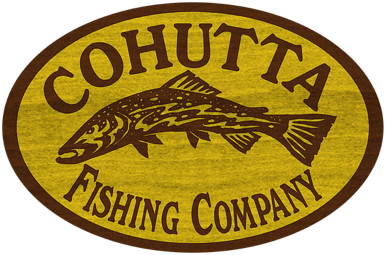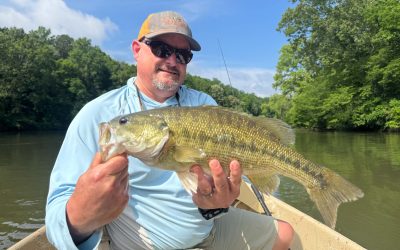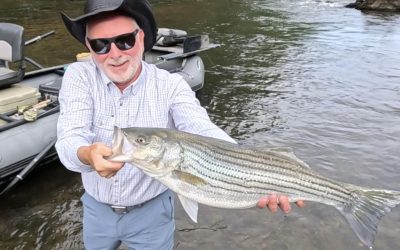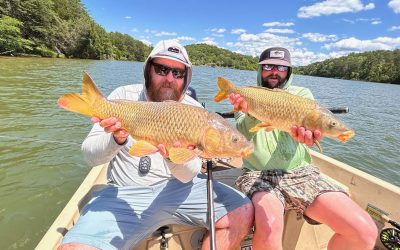With all the rain we’ve had pushing through lately, small creeks have been one of the few refuges for anglers to get on the water. Small creeks can be intimidating for the angler that fishes bigger water and provide a technical challenge to the more experienced angler. These creeks require different approaches and techniques in order to be successful.
- On the move: I fish creeks by working my way upstream. This allows me to cover more water and put my flies in front of fresh fish. Don’t spend too much time in one spot, as you’re only going to get so many casts in before you’ve fished a section of creek thoroughly.
- Walk softly: I take the time to find places that I can fish with the least disturbance of the water in front of me. This is especially important in wild trout streams. For example, as I approach the head of a pool, if I see a rock that I can kneel behind, I will position myself behind it in order to conceal my profile. I will walk along the banks and outside of the stream if an approach requires me to in order to not spook fish. Some guys even go as far as wearing drab colors and camouflage.
- Approach the water methodically: I always like to take a minute to analyze the water in front of me. For example, if I’m approaching a slow moving pool with a small waterfall at the head, I plan my casts: I like to target the tail-out first, then fish the middle and behind any rocks or structure, then fish the head of the pool. This allows me to put my flies in the best potential spots in an order that prevents me from casting over a fish and spooking it.
- Make each cast count: Presentation is the key to success – make as natural a presentation as possible and try not to make a large disturbance on the water. The typical cast is only going to be within 5 to 20 feet, which means sometimes mending isn’t an option with short drifts, so in order to make a good drift, I may cast my line across a rock or stump in the middle of difficult currents in order to anchor my line on the rock. This prevents my line from sweeping out of the zone. I also use a lot of high stick methods that keep my line off the water as well as allow me to fish pockets and water near arms reach. Shorter 2-4 weight rods with fly lines that load up the rod well with less than 10 feet of line out of the tip-top are ideal. Fiberglass fly rods are an excellent choice for creeks as well.
Small creeks provide some of the best scenery and fun fishing that is available in the southeast. While you may not always catch the largest fish, the beauty and feeling of child-like exploration is enough to keep you coming back. Always let someone know where you are fishing and be prepared in case something goes wrong. Many small creeks are remote and often times lack phone service. If you’ve got any questions, feel free to drop us a line at either shop. Cartersville: (770) 606-1100, Blue Ridge: (706) 946-3044.
Jacob Milholland






